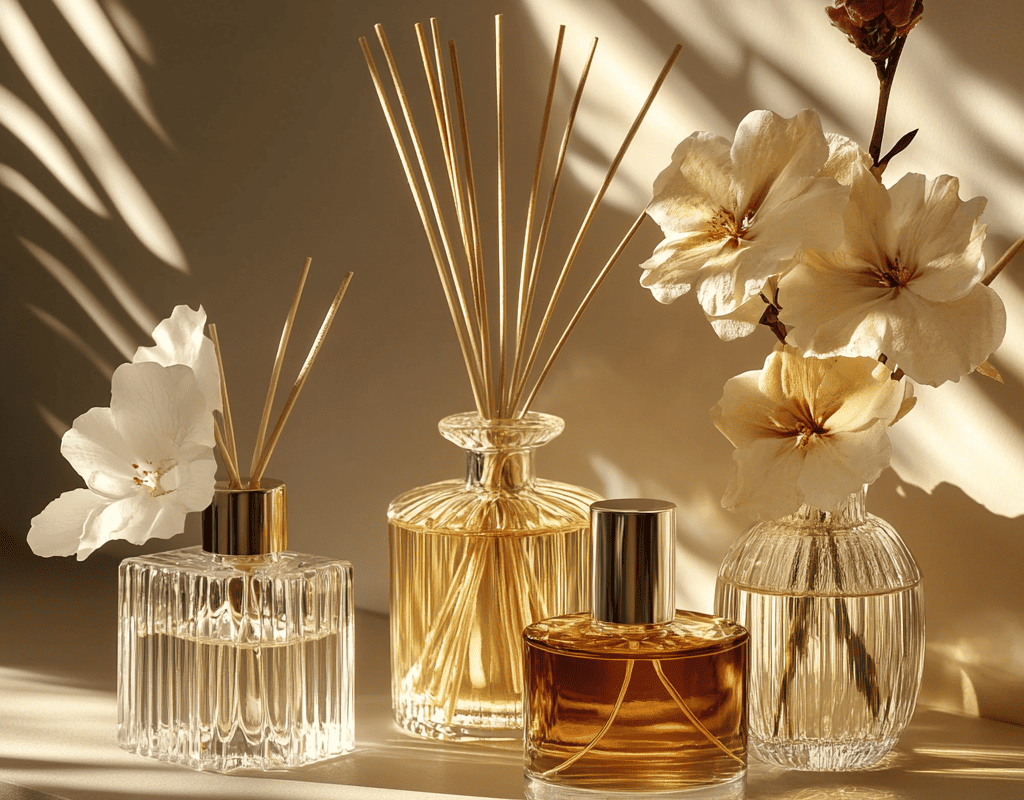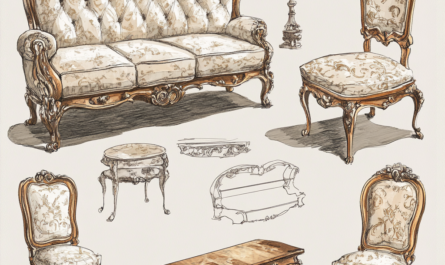Aromas can instantly change the perception of space, causing associations, awakening memories and creating an emotional coloring of the interior. The smell becomes an integral part of the atmosphere of the house, forming the mood and complementing the visual appearance of the room.
A well-chosen scent can make a room cozy, invigorating, or even mysterious. With the development of interior perfumes, we have the opportunity to choose not only the color of the walls or textiles, but also the scent that will sound in every corner of the house.
Aroma as a tool for emotional zoning
Each room in the house has its own function and requires a special approach – both in design and in the choice of aromas. For example, soft, relaxing notes are appropriate in the bedroom, and fresh, citrusy ones in the kitchen. It is the smell that helps to zone the space without resorting to physical partitions.
Smells shape the mood and pace of life. Where you need to concentrate, woody or herbal aromas are suitable. Where you want to relax, it is better to use vanilla, lavender, white flowers. And in the hallway – cleanliness and freshness, because this is the first thing that guests feel.
Proper zoning with smells can make a home not only comfortable, but also more organized emotionally. You come into a room and already feel what it is intended for.
Examples of zones and corresponding fragrances:
● Living room: sandalwood, amber, white tea
● Bedroom: lavender, musk, powdery notes
● Cuisine: lemon, rosemary, green tea
● Cabinet: leather, sage, cedar
Diffusers: background aromatization without effort
Diffusers are a simple and elegant way to fill your home with a constant scent without having to turn on appliances or light candles. The scented liquid evaporates through the sticks, creating a soft background that is not intrusive but persistent.
They are especially convenient for rooms where a stable smell is required: corridors, bathrooms, dressing rooms. The main thing is to choose the right aroma and number of sticks so that the intensity is comfortable.
There are many options on the market today: from minimalist glass ones to designer solutions that are decorative elements in themselves. This is not just a functional item, but a part of style.
Advantages of diffusers:
● Constant background without open flame
● Aesthetic appearance
● Possibility to control intensity (number of sticks)
● Suitable for all areas, including children’s rooms and bathrooms
Scented candles: coziness that you can feel
Candles are one of the most emotional ways of aromatization. Their soft flame, warm aroma and the ability to make the evening atmospheric make them favorites in bedrooms and living rooms. They not only fill the house with scent, but also create visual coziness.
For candles, the quality of wax and aromatic composition is important. Natural waxes – soy, coconut, beeswax – are safer and burn longer. And the aroma should be balanced so as not to cause a headache with prolonged use.
Candles are convenient for creating a certain mood: a romantic evening, winter warmth or meditative silence. The main thing is not to use them in places with small children or unattended animals.
Why Candles Are More Than Just a Source of Scent:
● They emphasize the mood and create an atmosphere
● Often have designer decoration
● Ideal for rituals and special occasions
● Suitable for aromatization for a limited time
Textiles and fragrances: when scent lives in fabrics
Few people think about it, but fabrics in the house are excellent carriers of smell. Blankets, curtains, pillows and even furniture upholstery can retain the aroma if you use special sprays or sachets. This allows you to make the smell a part of everyday life, unnoticeable, but very persistent.
Scented textiles work like a “second air”: they do not replace the main smell, but maintain a feeling of coziness. This is especially relevant for bedrooms and dressing rooms, where you want everything to smell “yours”.
For these purposes, use water-based sprays or aroma sachets – small bags with dried flowers, spices or absorbed essential oils. They can be placed in drawers, pillows, on shelves or inside sofa covers.
How to scent textiles safely:
● Use alcohol-free sprays – they won’t stain.
● Keep sachets away from direct contact with clothing.
● Refresh your scent no more than 1-2 times a week
● Make sure the scents are compatible with the perfumes and diffusers in the room.
How to choose notes according to your mood and season
Perfumes for the interior are not only aesthetics, but also the ability to control your internal state. At different times of the year and in different moods, you want different scents: warming in winter, cool in summer.
Notes for spring are everything related to blossom, freshness, lightness. In summer – citrus, greenery, sea breeze. Autumn requires depth – woody and spicy accords, and winter – coziness, amber and vanilla.
The choice of note also depends on the time of day. In the morning – light aromas that do not overload. In the evening – more intense, enveloping. And on weekends – you can allow yourself aromas that create a festive mood.
Aroma and season:
● Spring: mimosa, green tea, freesia
● Summer: lemon, lime, cucumber
● Autumn: sandalwood, cinnamon, patchouli
● Winter: amber, vanilla, cedar
Mistakes in interior aromatization and how to avoid them
Even in the most beautiful environment, the smell can ruin everything if it is chosen incorrectly. Too heavy aromas in small rooms, conflict between different aromas in one area, use of low-quality products – all this reduces comfort.
A common mistake is to use too many scents at once. The room turns into chaos, and instead of pleasure, a person feels tired or irritated. Less is better, but more precise.
Also, don’t blindly trust the descriptions. The same scent can smell different depending on the temperature, humidity, and even the color of the walls. That’s why it’s important to experiment with samples, mini candles, or sachets.
How to avoid mistakes:
● Do not combine more than two fragrances in one room.
● Choose fragrances based on the size of the room
● Use neutral scents in high traffic areas
● Consider the preferences of all family members and guests
Aromas are not just an addition to the interior, but its invisible but most important part. They help make the house alive, filled with character and soul. Proper aromatization enhances the aesthetics of the space and improves overall well-being.
By creating a fragrant background for our home, we choose coziness, harmony and mood. The main thing is to approach this consciously, taking into account not only fashion, but also personal feelings.
Everything that surrounds us in everyday life can be a source of inspiration – especially if it smells the way you want to live.
Questions and Answers
Yes, but it is important that they are in the same aromatic group or complement each other.
It is better to choose natural compositions and use them in ventilated rooms, observing safety precautions.
On average, from a few days to a couple of weeks, depending on the format and intensity of use.




